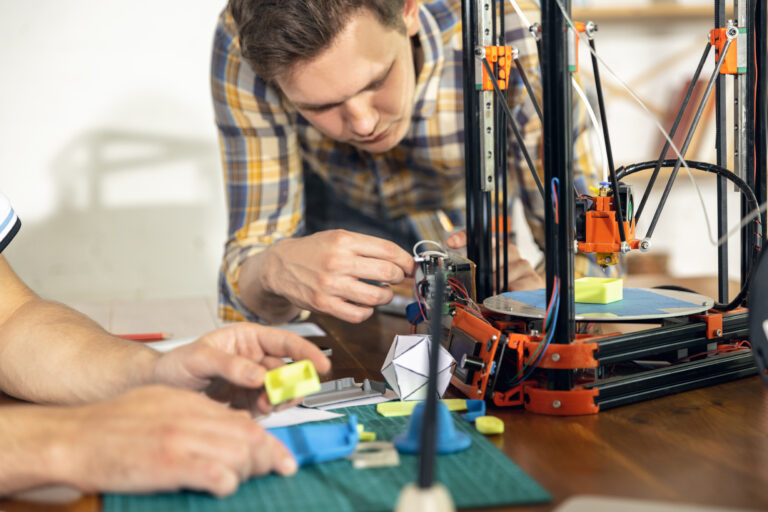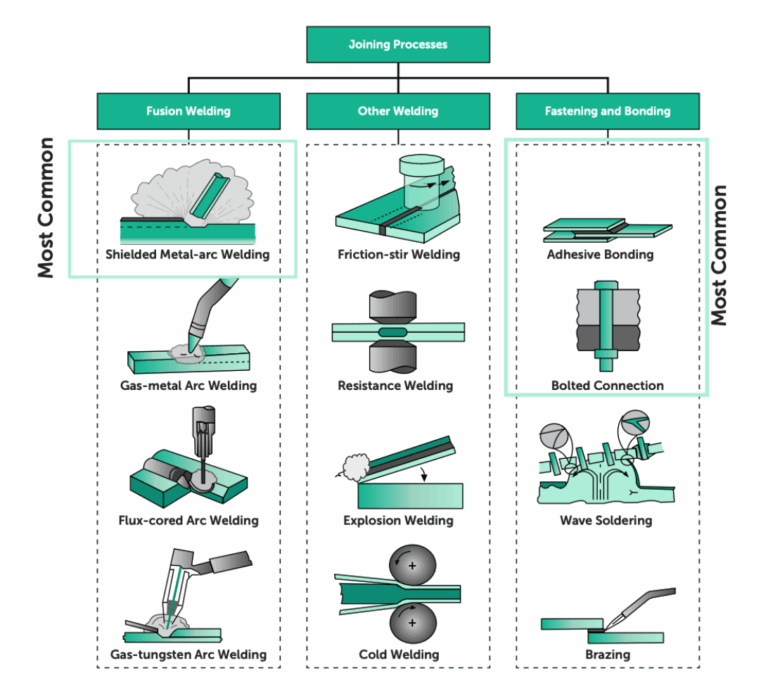Time to read: 8 min
Ensuring your parts are sufficiently finished to withstand environmental conditions is a critical consideration for every product. And among the most popular methods of environmental protection is sulfuric acid anodizing. There are several types of anodizing, and the Mil-PRF-8625 specification lays out the different methods: Type I, Type II and Type III.
This article focuses on Type II anodizing — known as sulfuric acid anodizing — which is non-chromate anodizing that uses a sulfuric acid solution. This surface treatment technique enhances the corrosion resistance, durability, and appearance of CNC-machined aluminum and other metals.
Overview of Sulfuric Acid Anodizing
The sulfuric acid anodizing process involves immersing a metal part in a sulfuric acid solution while applying a direct electrical current.
Sulfuric acid anodizing is an electrochemical process used to create a protective layer of aluminum oxide on the surface of aluminum, titanium, and other metals. The process involves immersing the metal parts in a sulfuric acid electrolyte solution (the chemical portion of the electrochemical process) while applying a direct current (the electrical part of the electrochemical process).
The part acts as the anode (or source for a negative charge), while a cathode (the source of positive charge that attracts electrons) made of lead or stainless steel is also immersed in the solution. When a direct current is applied, a controlled oxidation reaction occurs and forms a layer of aluminum oxide on the surface of the metal.
While the thickness is dependent on processing parameters, the anodized layer created by sulfuric acid anodizing is typically between 5 and 25 microns (0.0002 to 0.001 inches) thick. This aluminum oxide layer is hard, durable, non-porous, and provides excellent corrosion resistance — so it’s ideal for use in a wide range of applications, including aerospace, automotive, and construction.
Sulfuric acid anodizing can also be used to produce a range of colors on the surface of the metal. This is achieved by using dyes or pigments to fill the pores in the anodized layer. The resulting colors are stable, long-lasting, and ideal for decorative or branding purposes.
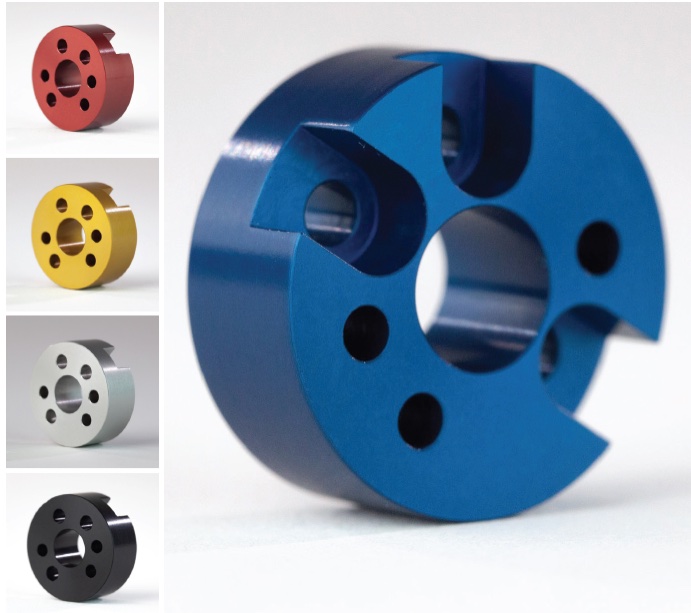
How Does Sulfuric Acid Anodizing Work?
Sulfuric acid anodizing is one of the most widely used types of anodizing for aluminum and is typically done at room temperature, although elevated temperatures can be used to accelerate the process. The process requires several steps:
- Cleaning: The first step is to clean the metal to remove any dirt, oil, or other contaminants to remove any foreign substances on the surface of the metal that can interfere with the anodizing process.
- Acid Etching: Once the metal is clean, it is typically etched in an acid solution to create a rough surface that helps the oxide layer adhere to the metal.
- Anodizing: The metal is immersed in a sulfuric acid solution and connected to the positive terminal of a power supply. When the power is turned on, a current flows through the solution and causes the oxidation reaction on the surface of the metal.
- Sealing: After the anodizing process is complete, the metal is rinsed with water to remove any excess acid, then immersed in a sealing solution to close the pores in the oxide layer and improve the durability of the finish.
The thickness of the oxide layer can be controlled by adjusting the voltage and time spent in the anodizing bath. Thicker oxide layers are typically more durable and resistant to corrosion, but can also have a rougher surface texture. Thinner oxide layers are smoother and more aesthetically pleasing, but may not offer as much protection against corrosion.
Sulfuric acid anodizing is an environmentally friendly process that produces no harmful byproducts. The electrolyte solution can be recycled and reused, which reduces waste and lowers the cost of finishing. The resulting anodized layer is also environmentally friendly, as it is non-toxic and anodized parts can be recycled.
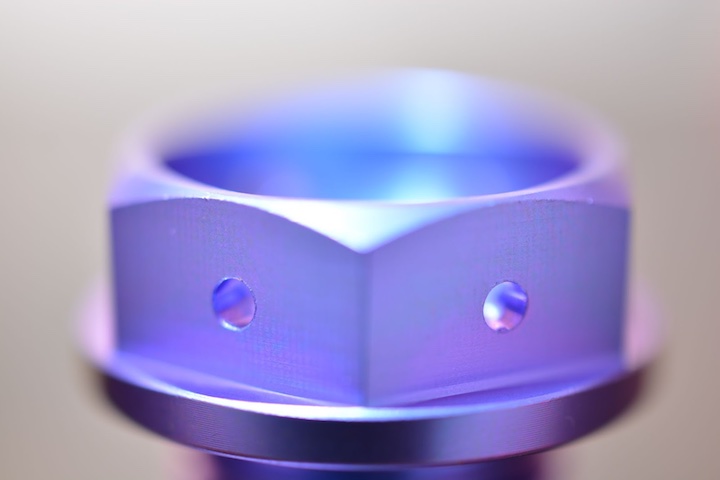
Materials Needed to Perform Sulfuric Acid Anodizing
The materials required to perform sulfuric acid anodizing include:
- Sulfuric Acid: This is the primary chemical used in the anodizing process. The concentration of sulfuric acid used can range from 10% to 30%, depending on the type of alloy being anodized and the desired thickness of the anodize coating.
- Process-Compatible Metal Alloy: The material to be anodized should be thoroughly cleaned and degreased before the process begins.
- Direct Current Power Supply: A direct current (DC) power supply provides the electrical current required for the anodizing process.
- Anodizing Tank: The anodizing tank is typically made of a non-conductive material, such as plastic, and holds the sulfuric acid solution and the aluminum parts being anodized.
- Cathodes: Cathodes complete the electrical circuit during the anodizing process and are typically made of lead or stainless steel.
- Anodizing Dyes (optional): Anodizing dyes are typically added to the sulfuric acid solution and can produce a range of colors, depending on the type of dye used.
- Sealing Solution: Sealing solutions can be made from a variety of materials, including hot water, nickel acetate, and sodium dichromate.
The sulfuric acid anodizing process requires a careful combination of chemicals, materials, and equipment to create a high-quality anodic coating on aluminum and its alloys.
Benefits of Sulfuric Acid Anodizing
Sulfuric acid anodizing produces a uniform protective layer across the entire surface of a metal part and it’s possible to achieve a high degree of precision and repeatability in the anodizing process. This layer of aluminum oxide provides several benefits including:
- Improved corrosion resistance: The anodized layer is highly resistant to corrosion, making it ideal for use in applications where the metal will be exposed to harsh environments or corrosive substances.
- Increased durability: The anodized layer is hard and durable, which helps to protect the metal from wear and tear, extend its lifespan, and reduce the need for maintenance.
- Enhanced appearance: Sulfuric acid anodizing can produce a range of colors on the surface of the metal, which is useful for improved aesthetics and branding purposes.
- Electrical insulation: The anodized layer is an excellent electrical insulator, so it’s useful in applications where electrical conductivity must be controlled.
- Non-toxic and environmentally friendly: Sulfuric acid anodizing is an environmentally friendly process that produces no harmful byproducts and the resulting anodized layer is non-toxic and can be recycled.
Overall, sulfuric acid anodizing is a versatile and effective process for enhancing the durability and corrosion resistance of aluminum and other metals, which makes it a popular choice in a variety of industries.
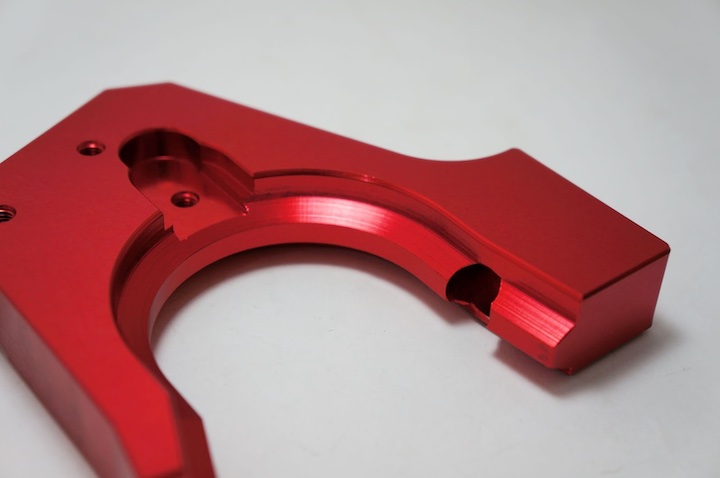
Common Sulfuric Acid Anodizing Applications
Type II anodizing is used in a variety of industries, including aerospace, automotive, and electronics. In the aerospace industry, it is used to provide corrosion resistance to aluminum parts and components, as well as to enhance their appearance. In the automotive industry, sulfuric acid anodizing is used to provide a decorative finish on aluminum wheels, trim, and other components. In the electronics industry, it’s used to provide a protective coating on electronic components and printed circuit boards.
Sulfuric acid anodizing is a widely used process for enhancing the properties of aluminum and its alloys, along with other metals such as titanium and magnesium.
Limitations of Sulfuric Acid Anodizing
While sulfuric acid anodizing is a widely used and effective finishing method, there are several limitations to this process, including:
- Limited Color Options: Sulfuric acid anodizing is generally limited to a range of natural metallic colors, such as silver, gold, and bronze. While it is possible to dye the oxide layer to create other colors, the range of colors is limited.
- Surface Imperfections: The anodizing process highlights surface imperfections, such as scratches, dents, or blemishes, so isn’t well-suited for applications requiring a perfectly smooth surface.
- Limited Thickness: The thickness of the oxide layer that can be achieved with sulfuric acid anodizing is limited to around 25 microns or less. While this can provide good corrosion resistance, it may not be sufficient for high-stress or high-wear applications.
- Brittle Coating: The oxide layer created through sulfuric acid anodizing is relatively brittle, which means it may crack or chip when subjected to significant stress or impacts.
- Environmental Concerns: The sulfuric acid used in the anodizing process can be corrosive and dangerous, and proper safety precautions must be taken. Additionally, the disposal of the acid solution can be environmentally harmful if not handled properly.
Quick Facts About Sulfuric Acid Anodizing
Is Sulfuric Acid Anodizing Durable?
The durability of sulfuric acid anodizing depends on several factors, including the thickness of the anodized layer, the quality of the anodizing process, and the environmental conditions to which the anodized surface is exposed.
Under normal environmental conditions, anodized aluminum can last for many years without significant deterioration. However, exposure to harsh environments such as high humidity, saltwater, or acidic environments can accelerate the degradation of the anodized layer.
In general, sulfuric acid anodizing can provide a durable and long-lasting surface treatment for aluminum components, but the specific lifespan will depend on the application and the operating conditions.
How Long Does it Take to Perform Sulfuric Acid Anodizing?
The time required to perform sulfuric acid anodizing can vary depending on the thickness of the anodic coating desired and the type of alloy being anodized. In general, the anodizing process can take anywhere from 20 minutes to several hours.
Do Sulfuric Acid Anodized Materials Easily Rust?
Sulfuric acid materials won’t rust because they are non-ferrous (only ferrous materials rust which is the formation of iron oxide). Non-ferrous metals are susceptible to corrosion or oxidation. Due to the protective, uniform oxide layer generated with anodizing, sulfuric acid anodized materials, particularly aluminum and its alloys, are less prone to corrosion than untreated materials.
However, it is important to note that the anodic coating is not completely impervious to corrosion, and in certain conditions, it can corrode or break down. For example, if the anodic coating is scratched or damaged, it can expose the underlying metal to the environment and make it more prone to rust. Additionally, sulfuric acid anodized materials can be susceptible to corrosion in certain environments, such as in the presence of certain chemicals or in marine environments.
Is Sulfuric Acid Anodizing Permanent?
Sulfuric acid anodizing is a permanent process that creates a durable and long-lasting surface treatment on aluminum and its alloys. The anodic coating produced by sulfuric acid anodizing is an integral part of the metal surface, and it cannot be removed by mechanical means or by normal environmental exposure.
The anodic coating produced by sulfuric acid anodizing is also resistant to fading, chalking, and other forms of degradation. However, it is important to note that the anodic coating can be susceptible to mechanical damage, such as scratches or dents, which can compromise its performance and appearance.
Are Sulfuric Acid Anodized Materials Conductive?
Sulfuric acid anodizing does not make aluminum inherently conductive or non-conductive. However, the anodized layer can have an impact on the electrical conductivity of the aluminum substrate because the produced oxide layer is an electrical insulator. However, this thin oxide layer isn’t generally sufficient to alter the electrical conductivity of the substrate.
In conclusion, sulfuric acid anodizing is a versatile and effective surface treatment technique that has numerous industrial applications. Its benefits include enhanced durability, improved adhesion, and increased corrosion resistance. However, it is important to note that the process can have environmental implications, as sulfuric acid is a hazardous chemical and its disposal must be managed carefully. Therefore, proper safety precautions and environmental regulations should be followed when implementing this process.
Fictiv – Sourcing Simplified
Now that you’re more knowledgeable about sulfuric acid anodizing, let’s anodize some parts! We’re experts in CNC machining and anodizing aluminum parts, and can deliver the precision components and pristine finishes you need.
Think of Fictiv as your operating system for custom manufacturing that makes part procurement faster, easier, and more efficient. In other words, Fictiv lets engineers, like you, engineer — instead of sourcing, vetting, onboarding, and managing suppliers.
With Fictiv, thousands of companies have streamlined their custom part sourcing workflows and unlocked far greater capacity for product innovation — and you can too! Create an account and upload your part to see what our instant quote process, design for manufacturability feedback, and intelligent platform can do for you.









